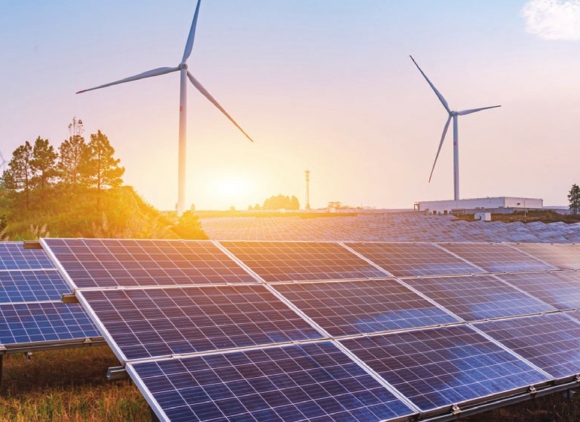
The Northeast stands at a crossroads.
With aggressive, nation-leading climate change, clean energy, and equity goals set by states like Massachusetts, we cannot wait to begin building for the future. The opportunity is now to make real, lasting change for urban, suburban and rural communities alike.
At National Grid, we’re excited to do our part.
In Massachusetts, we have worked hard to maintain systemwide reliability at 99.9 percent, while enabling more clean energy through the connection of 200 megawatts of distributed energy resources in 2022 for a total of more than 2 gigawatts connected to our system. We’ve also supported the installation of 10,000 heat pumps through Mass Save, with a goal of another 21,000 by 2024, and enabled the installation of more than 1,800 electric vehicle chargers, with another 32,000 to come.
Even still, the natural gas network carries three times as much energy at peak as the electric network, and fossil-fuel powered vehicles make up the vast majority of those on our roads. Shifting from a multi-fuel energy system to one primarily reliant on electricity to meet the Commonwealth’s net-zero greenhouse gas emissions goals by 2050 will require a major build-out of the grid.
The plan to do so must be at once comprehensive, thoughtful, and orderly if we’re going to meet the pace and scale needed to enable more electrification and move away from a fossil-based economy. To support this future, the electric grid must become fundamentally smarter, stronger, and cleaner.
Massachusetts electric distribution companies, including National Grid, recently delivered plans to transform the grid of the past into a smarter, more resilient two-way electricity superhighway that powers sustainable communities and provides all customers the opportunity to participate in and benefit from the clean energy transition.
National Grid’s Future Grid plan begins to define the scope and scale of what we collectively must do in both the shortand long-term to combat climate change and enable a more electrified future, as well as the policy and regulatory changes needed to make it happen.
We propose investing approximately $2 billion in the next five years alone in three key areas: network infrastructure like substations, poles, and wires; technology and platforms like IT systems, automation, real-time monitoring equipment, and sensors; and customer-facing programs, including those to enable more solar, efficiency, and electrified transportation. The proposal also includes plans to expand our strategic workforce development program launched this past spring.
These investments will make sure our grid is ready, reliable, and secure; that customers are able to make the clean energy choices that work for them when they want them; and that we provide opportunities to the communities we serve.
This plan represents an investment in our economy and our communities at the ground level. Building the Future Grid will require 11,000 part- and full-time jobs by 2030. But more than just creating new career paths, we recognize this is a chance to create opportunities directly in communities that historically have not benefited from — or worse, been burdened by — energy policies of the past.
It’s why we have launched a suite of workforce development pilot program academies focused specifically on environmental justice communities to reach everyone from work-ready adults who need access to training programs to college students looking for professional development opportunities to K-12 students who can benefit from vocational and STEM education long before they graduate.
And as we hire members of diverse communities, we will also continue to engage directly with environmental justice communities to ensure the clean energy transition is supportive of and responsive to the needs and expectations of all our customers. That means listening to identify how we can better tailor customer programs that support home energy efficiency and improve affordability of energy bills. That also means listening to communities that feel marginalized by energy policies, so we can plan a clean energy transition that more equitably shares the benefits and burdens across the state.
The Future Grid plan is designed to deliver a fair, affordable, and clean energy transition.
But more than that, we aim to empower all our customers and communities throughout Massachusetts by building a smarter, stronger, cleaner, and more equitable energy future.
Nicola Medalova is the Chief Operating Officer for National Grid New England.